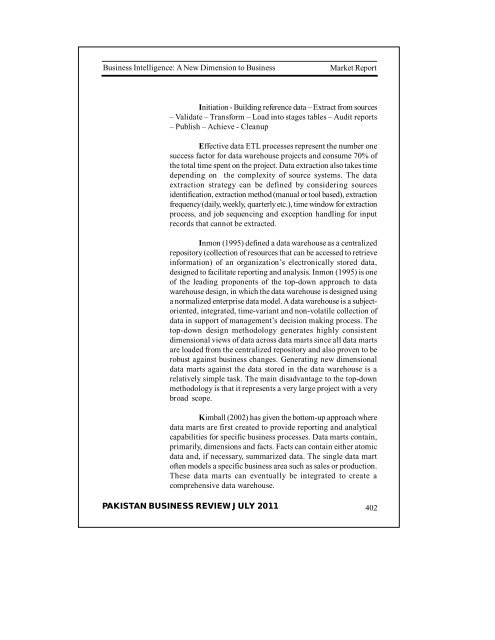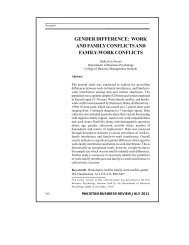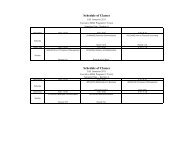PAKISTAN BUSINESS REVIEW - Institute of Business Management
PAKISTAN BUSINESS REVIEW - Institute of Business Management
PAKISTAN BUSINESS REVIEW - Institute of Business Management
Create successful ePaper yourself
Turn your PDF publications into a flip-book with our unique Google optimized e-Paper software.
<strong>Business</strong> Intelligence: A New Dimension to <strong>Business</strong><br />
Market Report<br />
Initiation - Building reference data – Extract from sources<br />
– Validate – Transform – Load into stages tables – Audit reports<br />
– Publish – Achieve - Cleanup<br />
Effective data ETL processes represent the number one<br />
success factor for data warehouse projects and consume 70% <strong>of</strong><br />
the total time spent on the project. Data extraction also takes time<br />
depending on the complexity <strong>of</strong> source systems. The data<br />
extraction strategy can be defined by considering sources<br />
identification, extraction method (manual or tool based), extraction<br />
frequency (daily, weekly, quarterly etc.), time window for extraction<br />
process, and job sequencing and exception handling for input<br />
records that cannot be extracted.<br />
Inmon (1995) defined a data warehouse as a centralized<br />
repository (collection <strong>of</strong> resources that can be accessed to retrieve<br />
information) <strong>of</strong> an organization’s electronically stored data,<br />
designed to facilitate reporting and analysis. Inmon (1995) is one<br />
<strong>of</strong> the leading proponents <strong>of</strong> the top-down approach to data<br />
warehouse design, in which the data warehouse is designed using<br />
a normalized enterprise data model. A data warehouse is a subjectoriented,<br />
integrated, time-variant and non-volatile collection <strong>of</strong><br />
data in support <strong>of</strong> management’s decision making process. The<br />
top-down design methodology generates highly consistent<br />
dimensional views <strong>of</strong> data across data marts since all data marts<br />
are loaded from the centralized repository and also proven to be<br />
robust against business changes. Generating new dimensional<br />
data marts against the data stored in the data warehouse is a<br />
relatively simple task. The main disadvantage to the top-down<br />
methodology is that it represents a very large project with a very<br />
broad scope.<br />
Kimball (2002) has given the bottom-up approach where<br />
data marts are first created to provide reporting and analytical<br />
capabilities for specific business processes. Data marts contain,<br />
primarily, dimensions and facts. Facts can contain either atomic<br />
data and, if necessary, summarized data. The single data mart<br />
<strong>of</strong>ten models a specific business area such as sales or production.<br />
These data marts can eventually be integrated to create a<br />
comprehensive data warehouse.<br />
<strong>PAKISTAN</strong> <strong>BUSINESS</strong> <strong>REVIEW</strong> JULY 2011<br />
402
















